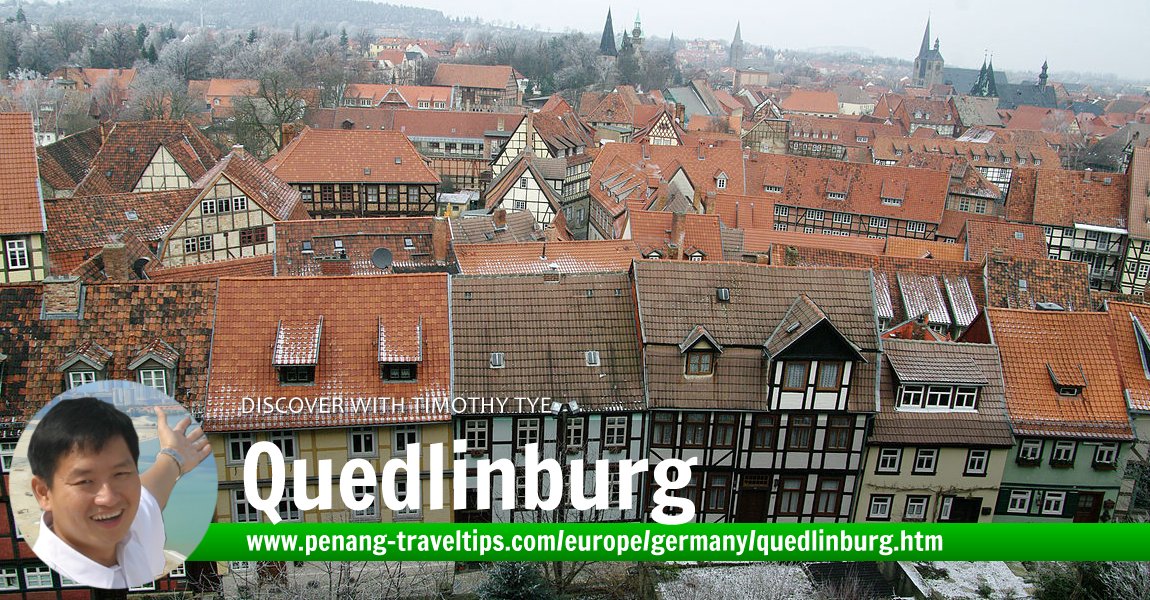 Quedlinburg in Saxony-Anhalt, Germany
Quedlinburg in Saxony-Anhalt, GermanySource: https://commons.wikimedia.org/wiki/File:Quedlinburg_view_from_castle_mountain_30.01.2011_14-37-33.JPG
Author: Dirk Ingo Franke

Quedlinburg is a guide to help you get to know Quedlinburg, a charming medieval town in the Harz district of Saxony-Anhalt, Germany. The town is located about 123 meters above sea level, much of which on the western part of the River Bodes. It covers 142 sq km (55 sq mi) and has a population of 28,500 people (2012 estimate). Quedlinburg is renowned for its beautiful timber-framed houses. The Collegiate Church, Castle and Old Town of Quedlinburg were inscribed as a World Heritage Site by UNESCO during its 18th session in 1994.
What to eat at Kodak
- ChyeLim Lee dined on Typical German dinner of Beef soup, Beer Pork, Grilled Chicken, Mixed Berry Ice Cream + German Beers at Brauhaus Lüdde on 24 September, 2019
Members' Travel Shots of Quedlinburg
- ChyeLim Lee posted on Quedlinburg on 24 September, 2019
About Quedlinburg
Quedlinburg traces its history to the early 9th century with a settlement known as Gross Orden which developed on the eastern bank of the river Bode. A donation by Henry the Fowler helped the town in its early development. Later on his widow founded a religious community here. She was later made Saint Mathilda.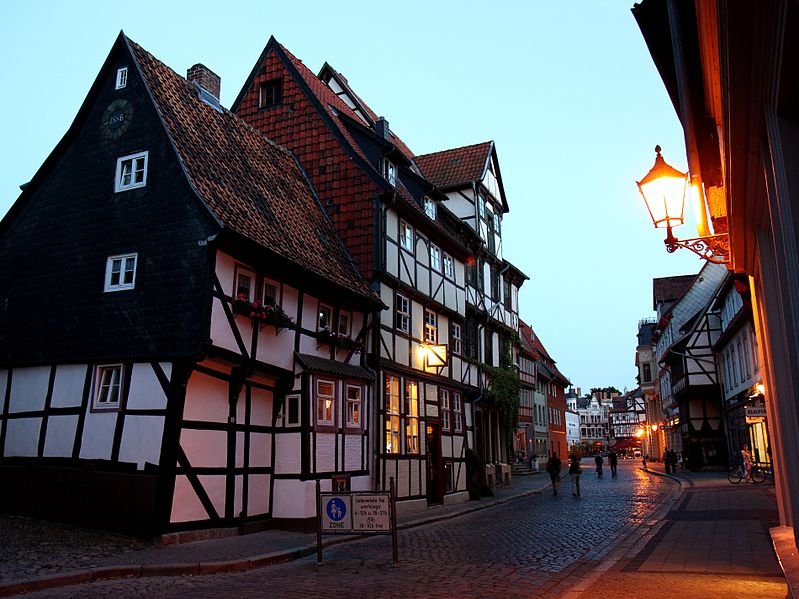 Marktstraße, Quedlinburg at dusk
Marktstraße, Quedlinburg at duskSource: https://commons.wikimedia.org/wiki/File:Quedlinburg_Marktstra%C3%9Fe_2009.jpg
Author: Stefan Munder

Quedlinburg became part of the Hanseatic League in 1426. It was during this time that intense rivalry arose between the town and Quedlinburg Abbey, though both converted to the Lutheran faith during the Protestant Reformation of 1539.
Quedlinburg became part of the Kingdom of Westphalia from 1807 to 1813 and then as part of the Prussian Province of Saxony. After the Second World War, the town became part of East Germany. The well-preserved state of its old town is due to specialists from Poland who were engaged in the 1980s to undertake restoration work on the old structures.
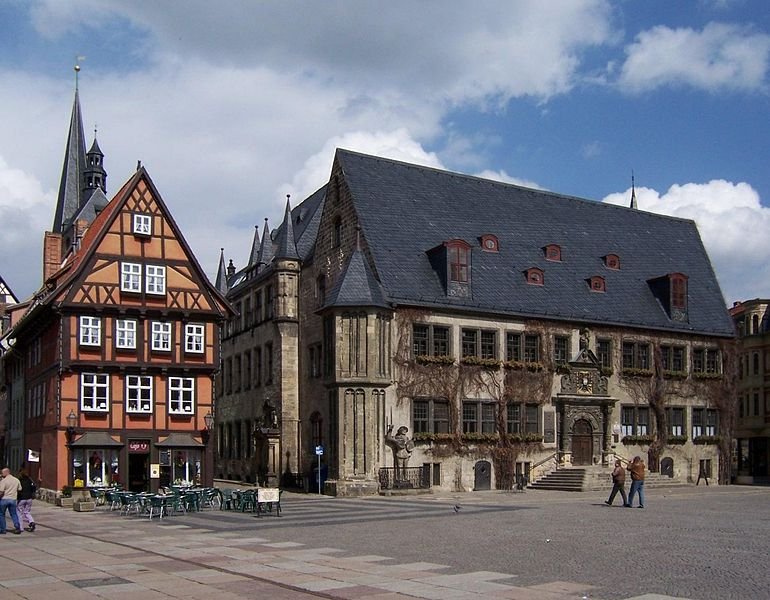 Quedlinburg Market Square
Quedlinburg Market SquareSource: https://commons.wikimedia.org/wiki/File:Quedlinburg_Markt_2.JPG
Author: Jungpionier

It was the capital of the East Franconian German Empire during the Saxonian-Ottonian dynasty. The town propered on trade during the Middle Ages, resulting in a number of exquisite timber-framed buildings representing at least five different centuries, including one of the oldest timber-framed structures in Germany, from the 14th century. Newer inclusions to the town are fine examples of Jugendstil structures from the late 19th and early 20th centuries. One of the most outstanding examples of Romanesque architecture is the Collegiate Church of St Servatius in Quedlinburg.
In 1994, the Collegiate Church, Castle and Old Town of Quedlinburg were inscribed as a World Heritage Site. This took place during the 18th session of the World Heritage Committee which was held in Phuket, Thailand, on 12-17 December, 1994.
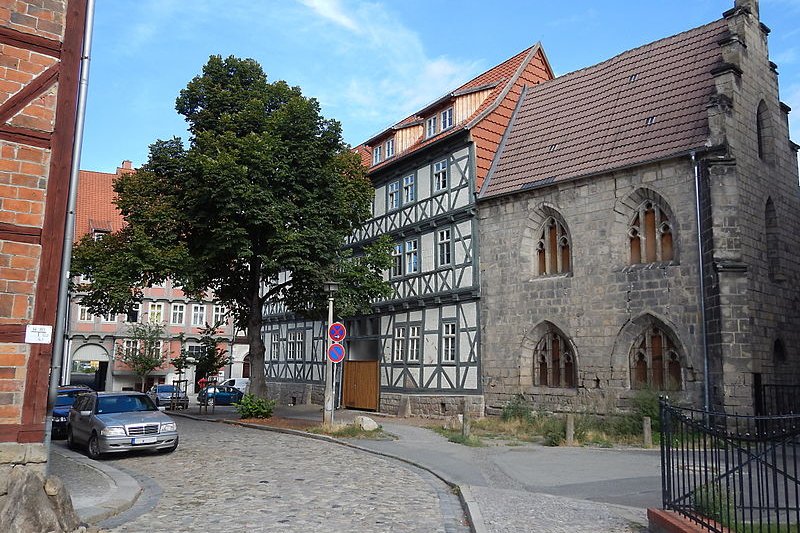 Breite Straße, Quedlinburg
Breite Straße, QuedlinburgSource: https://commons.wikimedia.org/wiki/File:Breite_Stra%C3%9Fe_34_Quedlinburg_im_Landkreis_Harz_in_Sachsen-Anhalt.JPG
Author: Wikimatze

World Heritage Site Inscription Details
Location: N 51 46 59.988 E 11 9 0Inscription Year: 1994
Type of Site: Cultural
Inscription Criteria: IV
How to go to Quedlinburg
Quedlinburg is located to the southwest of Magdeburg. The most straightforward route to reach it is to take Autobahn 14 heading south from Magdeburg until intersection with Highway 6n; continue west on Highway 6n to reach Quedlinburg.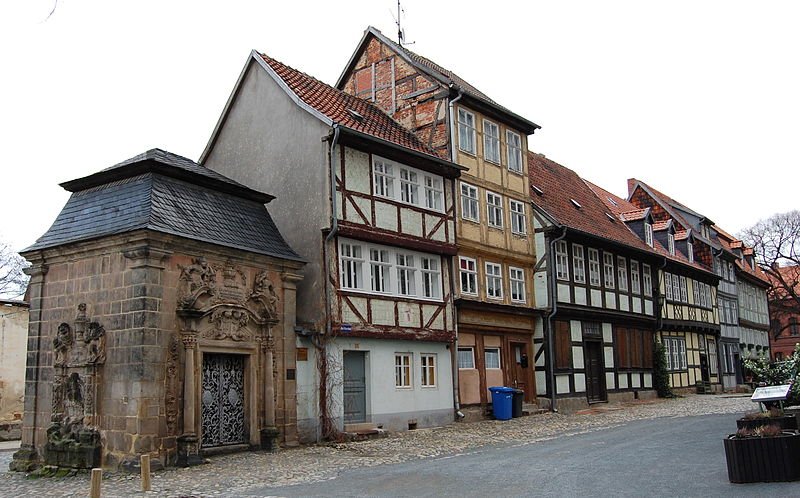 Goetzsches Mausoleum and other heritage market buildings in Quedlinburg
Goetzsches Mausoleum and other heritage market buildings in QuedlinburgSource: https://commons.wikimedia.org/wiki/File:Quedlinburg_Mausoleum_in_der_H%C3%A4userflucht.JPG
Author: Olaf Meister

Places of Interest in Quedlinburg
- Blasii Church
- Fachwerk Museum Standerbau (Museum of Timber-Frame Architecture in Standerbau)
- Goetzsches Mausoleum
- Klopstock Museum
- Mitteldeutsches Eisenbahn- und Spielzeug- Museum (Central German Model Train and Toy Museum)
- Munzenberg Museum
- Museum für Glasmalerei und Kunsthandwerk (Museum of Glass Painting and Handicraft)
- Quedlinburg Cathedral
- Schloss Museum
- Stiftskirche St Servatii and its Treasure
- Timber-framed houses
 Latest updates on Penang Travel Tips
Latest updates on Penang Travel Tips
 Discover with Timothy YouTube Channel
Discover with Timothy YouTube Channel
 PG Food Channel
PG Food Channel
 Learn Penang Hokkien YouTube Channel
Learn Penang Hokkien YouTube Channel
 SojiMart Videos
SojiMart Videos
Latest from Discover with Timothy: Gurney Bay - what to see and do there
About this website

Hello and thanks for reading this page. My name is Timothy and my hobby is in describing places so that I can share the information with the general public. My website has become the go to site for a lot of people including students, teachers, journalists, etc. whenever they seek information on places, particularly those in Malaysia and Singapore. I have been doing this since 5 January 2003, for over twenty years already. You can read about me at Discover Timothy. By now I have compiled information on thousands of places, mostly in Peninsular Malaysia and Singapore, and I continue to add more almost every day. My goal is to describe every street in every town in Malaysia and Singapore.
Robbie's Roadmap
- Episode 1: Robbie's Journey to Financial Freedom
- Episode 2: Lost in America
- Episode 3: The Value of Money
- Episode 4: The Mentor
- Episode 5: The Thing that Makes Money
- Episode 6: The walk with a Billionaire
- Episode 7: The Financial Freedom Awakening
- Episode 8: Meet Mr Washington
- Episode 9: The Pizzeria Incident
Copyright © 2003-2024 Timothy Tye. All Rights Reserved.


 Go Back
Go Back